
There is no doubt that the Indian garment exporters are going through the worst crisis period due to the sinking US dollar and the rising rupee. How can exporters survive in the given market conditions today? Should they participate in fairs like the Igedo to make inroads into the European Markets? Or should they eye the domestic market? It appears that the US market has lost its lustre and interest for the Indian exporters and now it is the turn of the European region to be eyed for potential business.
East European countries like Romania, Hungary, Poland have been regular buyers at the Igedo fashion fairs and are moving up the fashion ladder to be in the style race. The 19 Indian participants who showed leather wear, scarves, shawls and garments at the Autumn/Winter 2008-09 Global Fashions Fair in Düsseldorf at the Igedo had a lot of suggestions to share with MEHER CASTELINO to survive in this volatile export market.
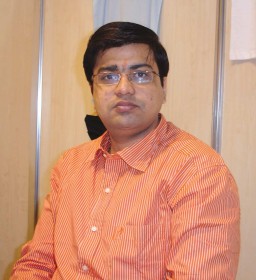
Price apparently is the key factor. “There is too much competition and even new buyers want value addition and a better price than our competitors. Of course China is doing circular knits while we are doing flat knits,” observed Samrat Kapoor of Samrat International. Samrat International known for its collection of knits, sweaters and a few wovens has 60% of the business in men’s wear.
“Our business too is divided in the 60/40 ratio of knits to wovens with Europe buying 70% and being our major buyer while USA is 30%,” revealed Samrat Kapoor. The knits priced at € 4-10 had new washes that gave the garments a stylish look. Buyer interest was from Germany who wanted a lot of value addition.
Shefali Malhotra of Design Oversees felt that one has to compete with China price wise but Indian quality is better. Design Overseas, barely two years in the business, deals in women’s woven and knit garments.
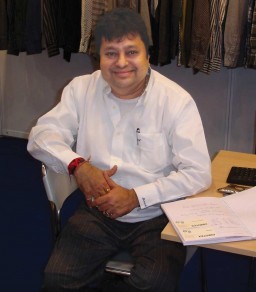
The collection on display was geared to high summer with satins and crepes. “We got buyers from Germany who were keen on the printed blouses for high summer delivery since that is our specialty. Price wise it was competitive at € 4 and we have a buyer base in South America, Spain and Israel,” said Shefali who hopes to get more business from Europe.
“The only answer is continuous innovation, sampling and products which the competitors don’t have. We can adopt from Turkey, Spain and compete with China and Bangladesh,” felt Kirti Shah, Director of Trendz Creations. A two decade old export house, Trendz Creations has been participating for ten years at the Igedo with men’s women’s and children’s woven collections. “Our specialty is different washes and value additions in a price range of € 5-8 for men’s. Women’s is 15% cheaper and children’s 25% less. Our exports are only to Europe and this time we got buyers from Germany, and Spain,” said Kirti.

Having a great business in the US market in spite of the recession, Manojh Chandiramani of Qualiti Apparels is a merchant exporter with control of 300 machines in Tirupur to make 25,000 garments a day. “This is our first time at the Igedo for our men’s, women’s and children’s basic polos, tees and sweaters. We do a lot of heavy printing and stone embroidery for the USA and are now keen on moving into Europe. Our prices are competitive at € 1.5-3,” stated Chandiramani. Buyers from Europe wanted more basic heavy knits for fall and some even for summer 2009. “A strong buyer is important. Price goes lower every year so we have to keep internal costs down.
From manufacturing exporters which was difficult, we turned into merchant exporters. We are doing well now. The raw material is supplied by us to Tirupur factories and we use the CTL (Consumer Testing Laboratory) which is Wal-Mart appointed,” he added.
Sanjay Jain, Director of Opera Clothing added, “The government has to increase drawback. We are developing new products and accepting lower quantities in different fabrics.” Well known for their men’s shirts in checks, stripes prints and value addition, Opera Clothing has been at the Igedo every season for three years. “We got agents from France and Holland and buyers are now looking for organic cotton which we do for USA and Australia and provide a certificate for the fabric too. Price wise it is a little expensive at US$ 8-10,” informed Sanjay.
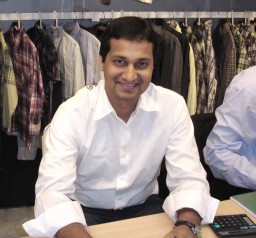
Dinesh Jain of Dolphin Clothing has 250 machines in Thane and 550 in Sangli with 5000-6000 garments per day and a Rs 35 crore turnover. “It is necessary to have good merchandising, sampling, designs and fabric. I source everything myself and travel abroad 4-5 times a year.” Exporting only high quality men’s shirts, Dinesh was a very happy man since his last and present appearance at the Global Fashion has been a great success.
In the business for 15 years, their men’s shirt business is 80% with a few women’s tops. “We do high quality printed and washed shirts. If the quantity is 2000 pieces per style our price is € 4-5 but if 600 then it is € 5-6,” said Jain an ex-doctor now turned exporter. He has got buyers from Germany, Austria, Poland, UK, Romania and Netherlands.
Devang Sheth, GM, Operations of Intime Knits felt that India doesn’t have a great foothold on winter wear – just basics, but India has an advantage over China to create garments. “The buyers now want quality service,” Sheth said. A 25 year old company Intime Knits has been a regular Igedo participant for 6 seasons exporting to Europe and USA. Devang Sheth hopes to expand further into Poland and Spain.
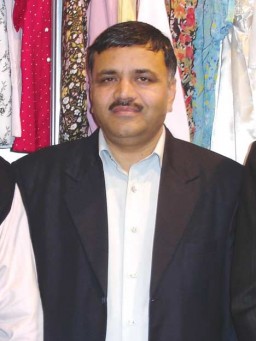
“Our sweatshirts, Tees and hoodies range between US$ 5-15. Our 150 machine factory makes 1000-1500 garments per day and we outsource some.
Right now the all over prints are in vogue with the eagle motif being in demand. Last year it was the skull print. Stripes too are hot but of the distressed kind,” informed Devang.
Kapsons Worldwide has a policy of accepting orders only in Euros. Mandeep Wasu of M M Exports India was more vocal when he stated, “Individual companies are doing their best with sheer hard work but politicians and laws are holding us back.”
Probably one of the oldest exporters in the business for 70 years, Kapsons Worldwide has participated at the Igedo for the second time besides the GDS leather fair.
Dealing in ladies’ and children’s wear they had buyers from Germany, Spain, Malaysia and UK who were interested in printed cotton dresses with plain light embroidery for Spring/Summer 2009 in the price range US$ 4-10.
[bleft]The main problem has been the stringent price points which buyers are demanding everywhere and many exporters have had to tighten their belts. Each company has devised its own way to stay competitive[/bleft]
The main problem has been the stringent price points which buyers are demanding everywhere and many exporters have had to tighten their belts.Praveen K Parmanandka of R D Parmanandka Textiles Ltd will go for a year without profits from regular buyers but has decided not to accept any new buyers from USA and Canada. The last day of the Igedo fair was very fruitful for Parmanandka with buyers from Poland and Finland wanting 2000 pieces in men’s underwear.
“We have been in the business for 20 years and our products are underwear and nighties in organic cotton and modal knits in the price range € 0.85-2. We already have a great market in Europe.”
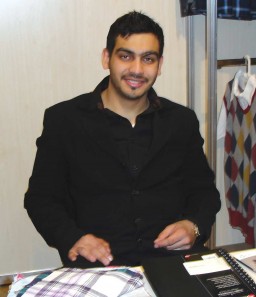
It was Mandeep Wasu’s (M M Exports India) second time at the Igedo in 12 years with exports already to Europe and USA. “We only do women’s and knits in the price range US $ 5-20 and with 400 machines, we are attempting to get our feet wet in the German market. We don’t participate in a lot of fairs but have loyal buyers.” Wasu is reducing costs but feels it is a losing battle against a rising tide. Each company has devised a way to stay competitive.
While, Opera has controlled rejections to achieve a Rs 48 crore turnover with 2,00,000 pieces per month, Shah feels Indians have to learn to accept or refuse firmly like China does since today quality is important. Sheth has been looking closely at raw materials, cutting overheads but not compromising on quality. Kapsons prefers cheaper sourcing and larger quantities to balance the price crunch. Dolphin is only working with high fashion buyers and even though margins have gone down a good turnover has helped.
[bleft]Many feel that prices can be balanced by increasing production. Increasing the quantities, innovations in embroidery, improving raw materials are some of the other possibilities for survival[/bleft]
Malhotra who does 30% knits and 70% woven feels exporters can succeed with value addition. Since the major cost is in raw materials, some exporters have had at times to go down in quality from super combed to semi combed yarn but have balanced it by giving good washes.
Many feel that prices can be balanced by increasing production. Parmanandka has increased production by 25% and so will Opera.

Sheth on the other hand would rather keep the production stable and look at the overall potential of the domestic market which is increasing. For Kapoor and Jain an increase from 25,000 pieces a month is a risky proposition. For Chandiramani it is a win-win situation as he subcontracts.
“We can go up or down depending on the orders,” he says Increasing the quantities, innovations in embroidery, improving raw materials are some of the possibilities for survival. Chandiramani has all compliant factories and controls costs; the benefits of which are passed on to the buyers. “While China is India’s competitor, buyers say the country wants volumes and has become expensive while Bangladesh has to import raw material,” said Chandiramani. Opera has acquired the ISO 9001 and SA 8000 certificate along with Fairtrade; while Dolphin has improved the QC department and designing. Sheth deals only in hi-fashion knits for high end stores, no super markets. Parmanandka has brought in German machines for dyeing, bleaching and sewing. Wasu has improved internal systems, “But there is only so much we can do. The broader issues are outside the factory.
Fortunately we are way ahead of China and Bangladesh but not changing labour laws is stifling employment,” she says. In all this export crisis, the sourcing strategies of buyers in Europe which is a stable region have also changed. For Parmanandka the buyers’ attitude is the same but his company has improved the delivery dates to 10-15 days. While Wasu feels that buyers are more savvy and only want to work with the organized sector. Sheth stated, “All are heading to India or have a back end office to reduce their costs. Some want four collections since T shirts are around the year item.” For Kapsons the forecast level has come down from 8 months to 4-5 months and deliveries are generally 6 weeks.
Dolphin however has seen quantities reducing by $ 25-30 but also an increase in styles which balances the production. “But deliveries for high season are in 4-5 weeks and having a good stock of raw materials helps to give fast deliveries,” said Jain. Opera has noticed that buyers want more patterns at lower prices. Chandiramani has seen that buyers are not worried about price but about assured delivery, performance and good relationship with compliance business.






